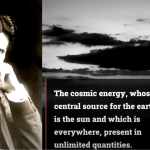Have you ever stopped to question the official narrative that the Earth is a giant spinning globe, hurtling through space at thousands of miles per hour? According to NASA and modern astronomy, this is what we are supposed to believe. But does it really make sense? In this article, we will explore the Flat Earth theory and use Polaris to debunk the claims made by NASA and modern astronomy.
What is Polaris?
Polaris, also known as the North Pole star, is a bright star that appears almost directly above the North Pole. According to NASA and modern astronomy, Polaris is located between 323 and 434 light-years away, which would make it between 1.9 quadrillions to 2.6 quadrillion miles away. But even if we grant them this distance, they still cannot explain how Polaris always remains perfectly aligned straight above the North Pole.
How Does Polaris Debunk NASA’s Claims?
If the Earth was really spinning, orbiting the Sun, spiraling around the outer arms of the Milky Way, and shooting through the universe, how is it possible that Polaris, which is supposedly 2 quadrillion miles away, always maintains its alignment straight above the North Pole? According to common sense and everyday experience, the Earth is stationary. William Carpenter wrote, “It is supposed in the regular course of the Newtonian theory that the Earth is in June about 190 million miles away from its position in December. Now since we can, in middle North latitudes, see the North Star looking out of a window that faces it, and out of the very same corner of the very same pane of glass in the very same window, all the year round, it is proof enough for any man in his senses that we have made no motion at all.”
The Problem with Viewing Polaris from the Southern Hemisphere
Furthermore, viewed from a ball-Earth, Polaris situated almost straight over the North Pole should not be visible anywhere in the southern hemisphere. For Polaris to be seen from the southern hemisphere of a globular Earth, the observer would have to be somehow looking through the globe, and miles of land and sea would have to be transparent. However, Polaris can be seen up to approximately 23.5 degrees south latitude.
Questioning NASA’s Claims
NASA and modern astronomy’s claims about the Earth’s movement are not only unproven, but they also defy common sense and everyday experience. The Flat Earth theory presents a compelling argument against these claims and suggests that we should re-examine the flawed theories that underpin them. It is time to question what we are taught and to explore alternative explanations that may challenge the status quo.
In conclusion, Polaris is a powerful tool that can be used to debunk NASA’s claims about the Earth’s movement. The Flat Earth theory presents a compelling argument that is worthy of consideration, and we should not dismiss it without careful examination. We encourage readers to watch the video that inspired this article and to do their own research on this topic. It is time to question what we are told and to seek the truth for ourselves.




















